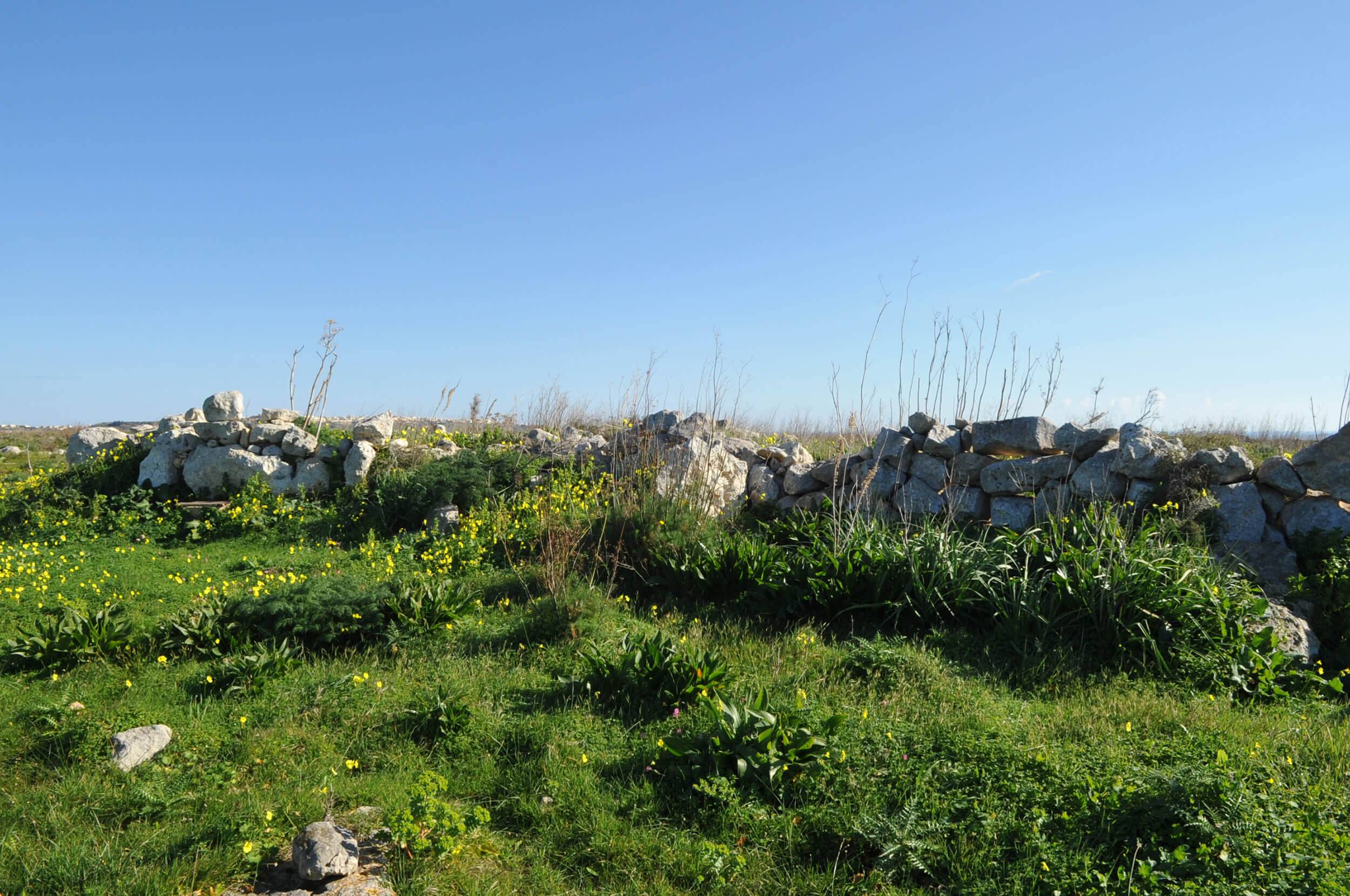Borġ l-Imramma: An Insight into a Prehistoric Architectural Marvel
The Borġ l-Imramma site stands as a testament to the architectural ingenuity of the temple period in Malta. Situated 500 meters southeast of the Ta’ Ċenċ plateau, this significant structure is a part of the rich prehistoric heritage of the Maltese islands. The presence of cart ruts and a dolmen in the vicinity further accentuates the historical importance of the site, offering a glimpse into the ancient activities that took place in the area.
Get your dose of History via Email
Structure and Design
Borġ l-Imramma shares architectural similarities with other renowned Maltese Megalithic temples, such as Ħaġar Qim and Ġgantija. The temple’s design is characterized by a large, approximately circular courtyard with a diameter of about 20 meters. This courtyard, which was likely open to the sky, is surrounded by several small, nearly circular chambers on its north, west, and south sides. The entrance to the courtyard, located on the northwest wall, is constructed from large, squared stones. Remarkably, the stones used for this entrance are considered to have the highest structural integrity ever discovered in Malta. Although the bottom part of the structure remains unexcavated, visible large portions of chert hint at the complexity and the scale of the construction efforts. The dating of the structure is estimated to be between 4100 and 3000 BCE, placing it within the broader context of the temple period’s architectural achievements.
Later Use
There is speculation that the Phoenicians, known for their extensive trading networks and cultural interactions across the Mediterranean, utilized the temple for purposes that remain unidentified. This aspect of Borġ l-Imramma’s history underscores the site’s continued relevance and possibly its adaptability to different cultural and religious practices long after its original construction.
Etymology
The name Borġ l-Imramma itself is evocative of the site’s physical and historical characteristics. “Borġ” is an expression denoting “an amount of rocks placed on top of each other,” which aptly describes the construction technique employed in the temple’s edification. “Imramma,” colloquially referring to a type of rodent known as “Ġurdien tal-Imramma,” adds a layer of local lore to the site’s nomenclature, though the connection between the name and the site’s function or significance remains a matter of speculation.
In conclusion, Borġ l-Imramma is a remarkable architectural feat of the temple period in Malta. Its design, construction, and subsequent use reflect the complex social, religious, and cultural dynamics of the prehistoric inhabitants of the Maltese islands. As research continues, the site promises to offer further insights into the prehistoric era’s architectural practices and the broader historical narrative of Malta.
Sources:

